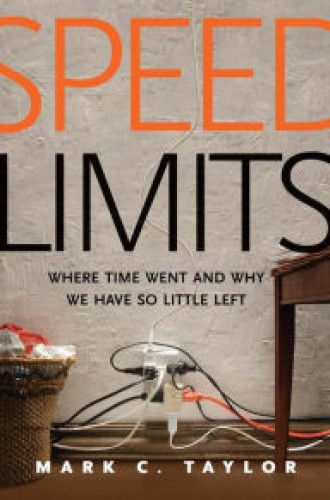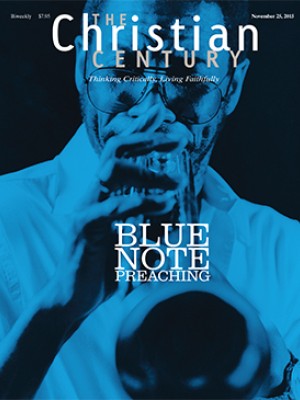Speed Limits, by Mark C. Taylor
Fast food. Fast Internet. Fast lives. Western culture in the 21st century is marked by ever-increasing speed, and we undoubtedly feel the pain of our accelerating world. Sociologists and philosophers have been trying to provide an account of why life has come to move so fast. The last two decades of Internet culture is certainly a contributing factor, but to understand the speed of our age most clearly, we must go back much farther. George Ritzer’s seminal work The McDonaldization of Society is a profoundly helpful resource for the quest to understand fast culture, but the scope of its story is limited to the 20th century—and primarily the latter half of that century. In Mark C. Taylor’s Speed Limits, we have a different sort of cultural history of speed, one that goes back farther and examines the interwoven threads of religion, society, politics, art, and economics.
Taylor, professor of religion at Columbia University, engagingly tells the complex story of the acceleration of Western culture, mixing personal narrative with history and philosophy. Taylor begins with the Reformation, and specifically the reminder that it was not merely a religious revolution, but also an economic one. One of Luther’s main concerns, Taylor notes, was the sale of indulgences, which not only functioned in the “economy of salvation,” but also funded the lavish worldly excesses of the Catholic hierarchy. By the late Middle Ages, Taylor emphasizes, the Catholic Church “could not survive without the income that the sale of indulgences provided.” Drawing on the work of the 14th-century philosopher William of Ockham, Luther argued that salvation no longer needed to be mediated through the hierarchy of the church and that individuals could interact with God directly.
Read our latest issue or browse back issues.
Taylor observes that Luther’s theology served fundamentally to “privatize, deregulate and decentralize” the Christian faith. This threefold move is familiar because of its resemblance to the economic movement that Milton Friedman and other free-market economists have called for in the last half century. John Calvin’s work also played what would prove to be a significant role in the acceleration. Taylor notes that it marked an economic shift within the Christian tradition, because Calvin was the first person within either Catholicism or Protestantism to argue that it was acceptable to lend money at interest as long as the interest rate was not excessive. Taylor highlights that this economic shift was an essential one in the prehistory of financial capitalism.
Other important threads in the tale of acceleration that Taylor spins here include the standardization of time and the rise of ubiquitous networks of communication and commerce. In the premodern era, before the rise of printed calendars and mechanical clocks, time was generally quantified and articulated locally, and it was driven largely by the natural rhythms of daylight and seasons. Taylor, whose grandfather was a jeweler skilled in the art of clock repair, narrates the history of how time became standardized. Early clocks told only the hour; later clocks added minute and second hands. Time zones would eventually be standardized to ensure the efficient transport of people and goods by sea and rail. “Time actually changes with modernity,” notes Taylor. “No longer external and natural, time becomes internal and mechanical.”
The 19th century saw the rise of telegraph networks that would come to span the globe. This communication technology came intertwined with the rise of the railroads, as telegraphs “were used to transmit messages and information that enabled trains to run on schedule at ever faster rates of speed.” Telegraphs also played a transformative role in the rise of financial markets, making possible broader and faster dissemination of market information, which would in turn accelerate trade and shape the ways in which it progressed. The acceleration and proliferation of intertwined networks of transport and communication over the 19th and 20th centuries ushered us into a world in which “material and immaterial flows intersect and accelerate until real and virtual assets become indistinguishable.”
Though the genius of this book lies primarily in the nine chapters that describe how we have come to find ourselves in this mess, in the final chapter Taylor addresses the question of how we should live in a world that is ever accelerating. He introduces and summarily dismisses the Slow movements that have emerged over the last 30 years—Slow Food, Slow Money, Slow Parenting, and even Slow Church. He writes that these movements are primarily about leisure and “creating places where it is possible to retreat from the world.” It seems that Taylor has little imagination for the potential that these movements have for articulating and embodying new and distinctively local sorts of culture and economies that could very well sustain us in the face of a global meltdown.
Still, Taylor offers wise advice that gets to the heart of why Speed Limits is such an important book: “It is necessary to devote considerable time and significant resources to understanding the intersecting vectors that have brought us to this tipping point.” Many of us feel the pains of fast culture today, and in trying to imagine a different way and beginning to follow it, we need to take Taylor’s work seriously. The fragmentation and acceleration of Western culture is not a new problem. It stretches back at least as far as the origins of modernity, and it will not be resolved overnight. Economics, agriculture, business, family life—everything—needs to be examined in the light of the One who is reconciling all things, and our churches, as placed communities guided by the wisdom of God’s all-reconciling work, are well positioned to begin embodying a different way.






